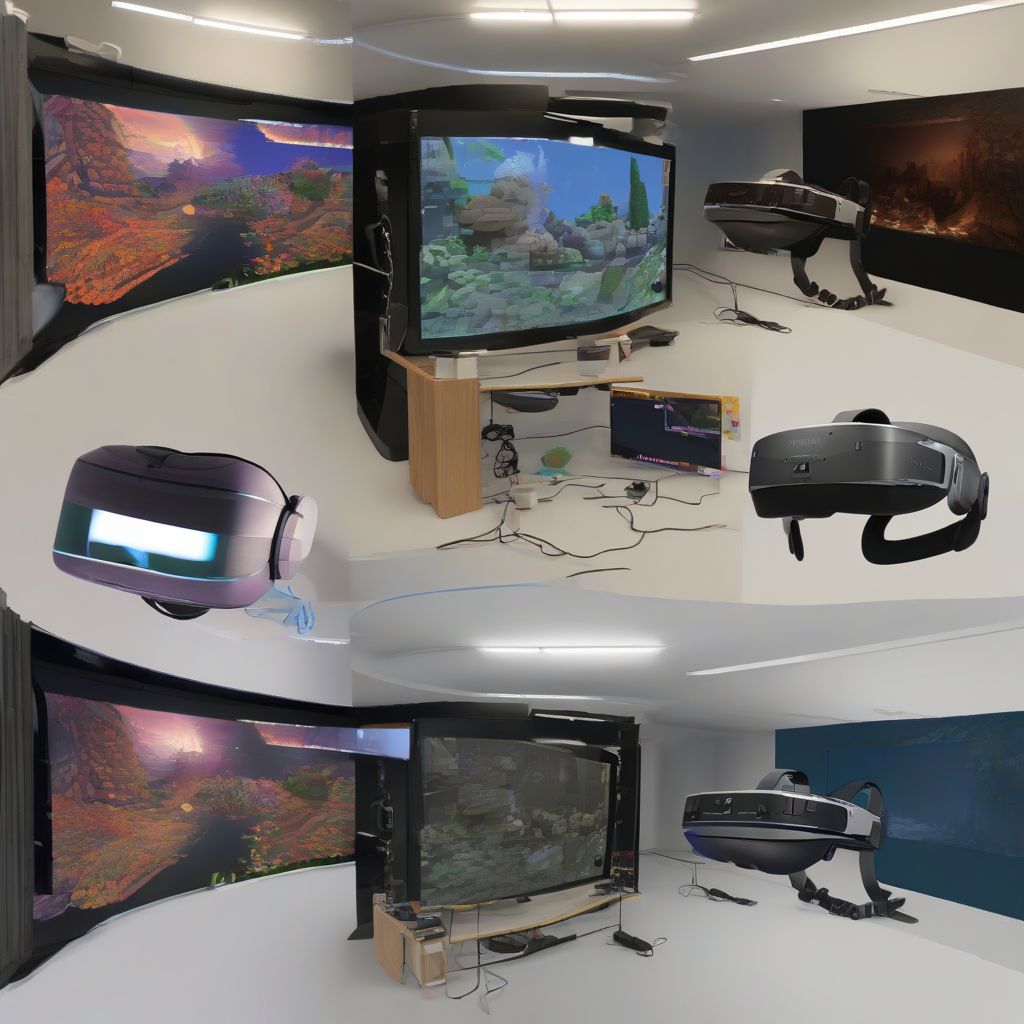Remember the days when strapping on a clunky headset transported you to a pixelated world of blocky characters and lagging movements? Fast forward to today, and the difference is staggering. Virtual Reality (VR) has undergone a metamorphosis, evolving from a niche curiosity to a sophisticated technology that immerses us in breathtaking virtual landscapes and offers intuitive, engaging interactions. So, buckle up as we take a deep dive into the fascinating evolution of VR graphics and gameplay mechanics!
From Pixels to Photorealism: A Visual Revolution
Early VR experiences, while groundbreaking for their time, often fell short in the visual department. Limited processing power meant grainy textures, low polygon counts, and a noticeable “screen-door effect” that reminded you of the technology’s limitations.
However, the past decade has witnessed a quantum leap in graphics processing units (GPUs) and display technology. Today’s high-end VR headsets boast high-resolution displays, often exceeding 4K resolution per eye, delivering crystal-clear visuals that blur the lines between the virtual and real.
But it’s not just about resolution; advanced rendering techniques like physically based rendering (PBR) simulate light and materials with astonishing realism. Dynamic lighting and shadows breathe life into virtual environments, while realistic textures and shaders make objects look and feel tangible.
 Evolution of VR Graphics
Evolution of VR Graphics
Beyond the Screen: Redefining Gameplay
The evolution of gameplay mechanics in VR has been just as dramatic. Gone are the days of clunky controls and limited interaction. VR now leverages cutting-edge motion tracking, haptic feedback, and innovative input devices to create truly immersive experiences.
Motion Tracking: Your Body Becomes the Controller
Early VR relied heavily on traditional gamepads, which felt limiting within a 3D environment. Modern VR systems, however, utilize sophisticated motion tracking systems that capture your movements with pinpoint accuracy and translate them into the virtual world.
This allows for natural and intuitive interactions, whether you’re reaching out to grab objects, dodging projectiles, or physically exploring your surroundings. This freedom of movement adds a whole new dimension to gameplay, fostering a deeper sense of presence and agency.
Haptic Feedback: Feeling the Virtual World
Haptic feedback adds another layer of immersion by providing tactile sensations that correspond to your actions in VR. This technology uses vibrations and force feedback to simulate the feeling of touch, allowing you to feel the weight of objects, the impact of collisions, and even subtle environmental cues.
Imagine feeling the resistance of a bowstring as you draw back an arrow or the rumble of an engine as you grip the virtual steering wheel of a race car. Haptic feedback transforms VR experiences by engaging your sense of touch, creating a more realistic and visceral connection to the virtual world.
Innovative Input Devices: Expanding the Possibilities
From hand-tracking technology that allows you to use your hands as controllers to full-body tracking suits that capture your every move, the range of input devices available for VR is constantly expanding. These innovations are pushing the boundaries of what’s possible in VR gameplay, enabling developers to create more immersive and interactive experiences.
The Future of VR: A World of Possibilities
The evolution of VR graphics and gameplay mechanics is far from over. As technology continues to advance, we can expect even more realistic visuals, intuitive controls, and groundbreaking gameplay experiences.
[amazon bestseller=”VR Headsets”]
The Metaverse: A Persistent, Shared Virtual World
One of the most exciting possibilities on the horizon is the development of the metaverse—a persistent, shared virtual world where users can interact with each other, participate in events, and even conduct business. VR is poised to play a central role in realizing this vision, providing the immersive and interactive platform needed to bring the metaverse to life.
VR in Education, Training, and Beyond
Beyond gaming, VR is rapidly being adopted in various fields, including education, healthcare, engineering, and architecture. From virtual field trips that transport students to ancient Rome to surgical simulations that allow doctors to hone their skills in a risk-free environment, VR is transforming the way we learn, work, and interact with the world around us.
Conclusion: The VR Revolution is Here
The evolution of VR graphics and gameplay mechanics has been nothing short of remarkable. From pixelated landscapes to photorealistic worlds and clunky controls to intuitive interactions, VR has come a long way in a relatively short time. As technology continues to advance, we can only imagine the incredible experiences that await us in the ever-evolving world of virtual reality. What virtual adventures will you embark on?
